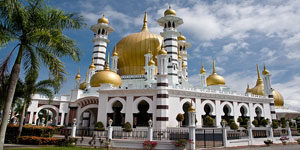Masjid Architectural Design
Masjid Architectural Design comprises the architectural styles of buildings associated with Islam. It encompasses both secular and religious styles from the early history of Islam to the present day.

Islamic architecture comprises the architectural styles of buildings associated with Islam. It encompasses both secular and religious styles from the early history of Islam to the present day. Early Islamic architecture was influenced by Roman, Byzantine, Persian, Mesopotamian and all other lands which the Muslims conquered in the seventh and eighth centuries. Further east, it was also influenced by Chinese and Mughal architecture as Islam spread to Southeast Asia. Later it developed distinct characteristics in the form of buildings, and the decoration of surfaces with Islamic calligraphy and geometric and interlace patterned ornament. New architectural elements like cylindrical minarets, pointed arch, muqarnas, arabesque, multifoil were invented. The principal Islamic architectural types for large or public buildings are: the mosque, the tomb, the palace, and the fort. From these four types, the vocabulary of Islamic architecture is derived and used for other buildings such as public baths, fountains and domestic architecture.
Masjid Direct provides a complete architecture design service to ensure that your requirements are met every step of the way from day one. We are experts in both traditional design and the methods used to create quality buildings. This goes hand in hand with development of contemporary design which complements the surroundings whilst having a cutting edge look and feel.
Incorporating advanced construction methods and sustainable technologies into architecture design means our vision for you is future proof, environmentally friendly and sympathetic to the surroundings.
Using our architectural design services alongside complete project management both from Masjid Direct will provide your project with all the in-house skills needed. Our architecture design services include concept, development and detailed technical design all meeting current NHBC and Building Regulation






